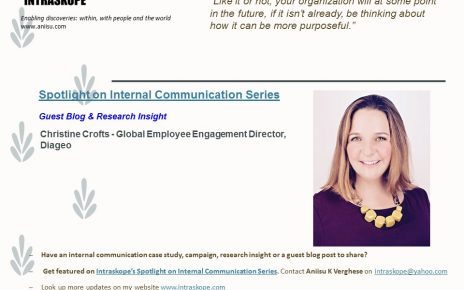Recently, a message on Linkedin on information sufficiency piqued my interest and made me probe how much we value the most used channel in employee communications – email. The question of communications sufficiency plagues communicators and leaders. Overcommunicating can lead to information overload and communicating less can result in lack of clarity and probably the spread of rumors.
An average employee gets over 120 mails a day.The threshold is about 50 per day, after which productivity drops and so does health indicators. The art and science of getting it right is by having a pulse of your communication environment and climate. Knowing when to up the game and when to turn it down matters, while staying consistent and relevant to your audiences. The question is not how much but how relevant is the information employees are receiving. Not getting the information they need, when they need it, results in a lack of connection to the purpose as worse can be perceived as disrespectful. What’s worse, a majority of mails staff get are worthless in terms of information they need.
According to a McKinsey study, ‘the average interaction worker spends an estimated 28 percent of the workweek managing e-mail and nearly 20 percent looking for internal information or tracking down colleagues who can help with specific tasks. But when companies use social media internally, messages become content; a searchable record of knowledge can reduce, by as much as 35 percent, the time employees spend searching for company information.” Not all the information received is useful. Some distract and can reduce productivity when not written well. Studies have indicated that organizations stand to lose millions due to poor communication. Also, some companies have outright banned mails to reduce this epidemic from taking over the lives of their staff. Others have turned to social networks although e-mail still continues to be preferred mode of communication.
As per a study by Slack, key work expectations to perform a majority of roles jobs will evolve by as much as 42% over the next few years, dramatically changing work and organization priorities. So, it isn’t about the number of mails that are sent. It is about the quality of the communication and the ownership rests with leaders and communicators to create systems and processes that empower managers and other ‘power’ users of communication to get right.
When it comes to communication efficiency, it is vital to explore the subject from different perspectives. Does the communication lead to better clarity? Can it result in better acceptance? Has it improved satisfaction among audiences? Did it improve the overall experience and sense of belongingness? A study conducted by IULM recommends dialogue with managers and staff as more valuable to help provide clarity and direction.
The progression is from communication sufficiency to clarity to acceptance to satisfaction to engagement and then to experience can broaden the expectations of measurement and drive a meaningful dialogue with stakeholders.
Rather than getting caught in the nuances of e-mail and channel outtakes, it is important to shift the focus to tackling stakeholder perceptions, understanding and business outcomes.


